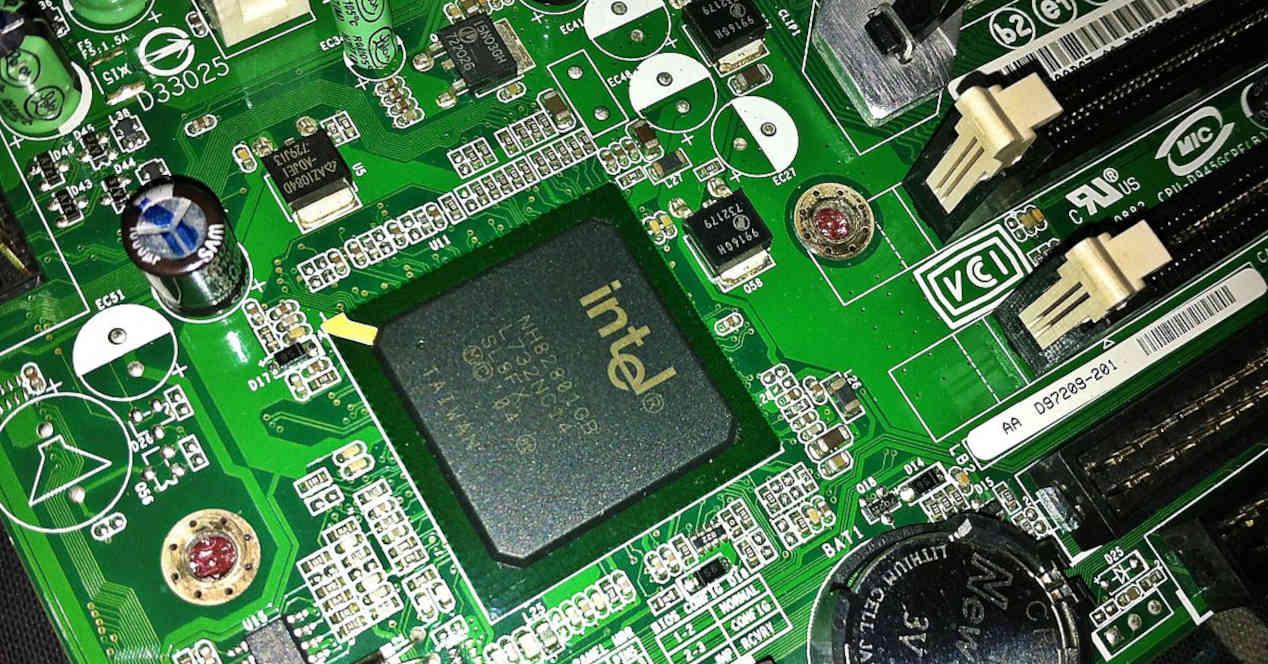The motherboard chipset is one of the most important parts of a desktop computer, but it is a component that is not found in computers with other form factors. There are several reasons why they weren’t 100% integrated into desktops, some of them are clear to the naked eye, but others are more complex to see.
The chipset is the Southbridge
Originally, PC motherboards, apart from the CPU socket, came with two chips. The first of these was the Northbridge, which was responsible for communicating the CPU and the Southbridge with the system’s RAM memory. In addition to acting as a bridge between the Southbridge and the CPU. Today, the Northbridge is integrated with all processors on the market, regardless of the market, and uses the ISA they use.
The Southbridge is really nothing more than a hub, it is the Rome of all the paths taken by peripherals to communicate with the CPU. All I / O interfaces like PCI Express, USB, SATA and others lesser known must go through the Southbridge or Chipset to communicate with RAM and CPU.
If we make an observation to SoCs and CPUs for small form factors and with little to no expandability, we will see that they have no chipset to the naked eye. The reality is, it’s inside the main SoC of the system. It was not eliminated, because the functioning of the system is an essential part and therefore the chipset has been integrated.
The chipset is not always integrated into the processor
Take any chip whose lithograph is annotated and you will see that a fact is accomplished as a universal law. Whether you are talking about a CPU or a GPU, everything that needs to communicate with an external element needs a communication interface, which is placed on the outside of the chip. In the same way that interfaces with RAM increasing in number what they do is increase perimeter, so do I / O interfaces.
For desktop processor manufacturers, it makes more sense to use 4 lanes of PCI Express or any equivalent interface to connect the external chipset to the CPU than to place all the interfaces that the chipset carries on the perimeter of the SoC or CPU. Keep in mind that a larger perimeter means a much more expensive chip to manufacture and fewer units are on sale.
The other reason is that it allows them to use certain SoC and CPU designs on laptops and desktops. In the case of the portable versions, they usually have an internal chipset with everything needed for this type of computer, but with enough PCI Express lanes to integrate a chipset in the desktop version.
The activity of two chips instead of one
It will come as a surprise to many of you, but when it comes to selling you a desktop processor, they are not only selling you that processor, but also the chipset that comes with it in the same pack, because you are going to need to the motherboard with the same socket, the which contains the chipset. In reality, processor manufacturers tend to differentiate between laptop and desktop sockets for this reason, because in the case of desktop processors, the prices are lower than those of laptops.
The reason is that laptop manufacturers often won’t buy the chipset in a bundle with the processor, forcing Intel and AMD to raise the price from manufacturers. So the socket swap is that they can’t get a cheaper processor in the process. This is not the case with desktops, as the chipset allows them to lower the price of processors while grabbing it on the other side and vice versa. This is the economic reason why the chipset was not integrated into desktop processors and SoCs.











